- Home
- Margaret Atwood
Circle Game
Circle Game Read online
the circle game
the circle game
margaret atwood
INTRODUCTION BY
Sherrill grace
Copyright © 1966, 1998 by Margaret Atwood
Introduction copyright © 1978, 1998 by House of Anansi Press
All rights reserved. No part of this publication may be reproduced or transmitted in any form or by any means, electronic or mechanical, including photocopying, recording, or any information storage and retrieval system, without permission in writing from the publisher.
Published by
House of Anansi Press Inc.
110 Spadina Ave., Suite 801
Toronto, ON, M5V 2K4
Tel. 416-363-4343
Fax 416-363-1017
www.anansi.ca
Distributed in Canada by
Publishers Group Canada
250A Carlton Street
Toronto, ON, M5A 2L1
Tel. 416-934-9900
Toll free order numbers:
Tel. 800-663-5714
Fax 800-565-3770
06 05 04 03 02 2 3 4 5
NATIONAL LIBRARY OF CANADA CATALOGUING IN PUBLICATION DATA
Atwood, Margaret, 1939–
The circle game
Poems.
ISBN 0-88784-629-7
I. Title.
PS8501.T86C57 1998 C811’.54 C98-931443-X
PR9199.3.A78C57 1998
The sequence The Circle Game first appeared as a series of lithographs by Charles Pachter. Some of the other poems first appeared in Alaska Review, The Canadian Forum, Edge, English, Evidence, Kayak, Prism International, and Queen’s Quarterly.
Cover Design: Bill Douglas at The Bang
Typesetting: ECW Type & Art, Oakville
Printed and Bound in Canada
We acknowledge for their financial support of our publishing program the Canada Council for the Arts, the Ontario Arts Council, and the Government of Canada through the Book Publishing Industry Development Program (BPIDP).
For J.
CONTENTS
Introduction by Sherrill Grace
This Is a Photograph of Me
After the Flood, We
A Messenger
Evening Trainstation, Before Departure
An Attempted Solution for Chess Problems
In My Ravines
A Descent Through the Carpet
Playing Cards
Man with a Hook
The City Planners
On the Streets, Love
Eventual Proteus
A Meal
The Circle Game
Camera
Winter Sleepers
Spring in the Igloo
A Sibyl
Migration: C.P.R.
Journey to the Interior
Some Objects of Wood and Stone
Pre-Amphibian
Against Still Life
The Islands
Letters, Towards and Away
A Place: Fragments
The Explorers
The Settlers
INTRODUCTION
by Sherrill Grace
Margaret Atwood’s first major book of poetry, The Circle Game, won her the Governor General’s Award for 1966, and in many other ways announced her arrival as an important contemporary poet. The title poem first appeared in a limited folio edition in 1965, designed, illustrated, and printed by Charles Pachter. Contact Press then published the entire collection in 1966, but this edition quickly went out of print and a new one was published the following year by House of Anansi Press. In her Selected Poems (1976), Margaret Atwood included fewer than half of the poems that appear in the original Circle Game, and hence the reader of the Selected has only a limited sense of the book as a unified whole. This Anansi reprinting, then, is especially welcome, for it indicates the lasting importance of the collection and provides an opportunity to reconsider the first major work of one of our finest writers.
Upon publication, the book was generally wellreceived and most reviewers recognized the appearance of an authentic and distinctive voice. However, certain fallacies which have always plagued the understanding of Atwood’s work arose in these early reviews: she was labelled an autobiographical writer in the narrowest sense and as a “mythopoeic poet” who followed the precepts of the so-called Frye school. Further misreading of her work was to come later with the publication of The Journals of Susanna Moodie (1970), Power Politics (1971), and Survival (1972), and her adoption by American feminists and Canadian nationalists.
If one compares Atwood’s earlier poems — those published in Alphabet or in her first chapbook, Double Persephone, for example — with the poems in The Circle Game, one is struck by The Circle Game’s maturity, its new assurance of voice, form, and approach. The acerbic wit, the cool detachment, and the authority and control, now recognized as integral to the Atwood voice, are present in The Circle Game, as well as the distinctive aural-visual dynamic of the style, and Atwood’s intense preoccupation with the double aspect of life. Also characteristic is the spareness of the punctuation (except for parentheses), the controlled patterning of the lines and section breaks. Thematically, Atwood here explores many of the concerns that have continued to intrigue her — the traps of reality, myth, language, and the pernicious roles we play, the cage of the self, and above all, the nature of human perception.
Although one must be wary of forcing too rigid an order upon the poems, the arrangement of The Circle Game does suggest a definite pattern. The opening poems present a variety of circle games within which the speaker struggles for an escape. The growing sense of defeat and impasse climaxes in the title poem, “The Circle Game,’ when the speaker realizes that she wants to break the circle. Several poems follow in which the speaker tries various escape-routes, until a sense of equilibrium is attained in the final three poems. This balance occurs, in part, through the development of both the reader’s and the speaker’s perception. The opening poem, “This Is a Photograph of Me,” challenges our perception immediately, asking us to adjust our sights, to find out where this particular voice is coming from. If we can learn how to do this, the voice promises us that “eventually/you will be able to see me.” The ironic double structure of this poem, its emphasis on seeing, and its sharp visual imagery urges us to rediscover our senses and our relationship with the world.
The title poem portrays the danger of misperceiving the roles we assume and the games we play in our personal relations. Images of rooms, mirrors, and circles create the sense of claustrophobic entrapment:
Being with you
here, in this room
is like groping through a mirror
whose glass has melted
to the consistency
of gelatin
You refuse to be
(and I)
an exact reflection, yet
will not walk from the glass,
be separate.
Underlying this apparent impasse is the perception that the alteration of things will be destructive for both partners: the speaker is “transfixed/by your eyes’/ cold blue thumbtacks”. But she also knows that “there is no joy” in the game, and that she wants “the circle/ broken”, regardless of the cost.
Most of the poems in the collection focus upon the tension between opposites, whether male/female, order / chaos, day/night, rooms/open spaces, or the larger polarities of stasis and movement, self and other. “Journey to the Interior” explores the labyrinth of the self. It is as if the speaker in the earlier poems, having found escape from circle games impossible, has withdrawn into the self only to discover that she is enclosed in the final, most dangerous circle: “it is easier for me to lose my way/forever here, than in other landscapes”. The alternative is to abandon the egocentric self. I
n “Journey to the Interior,” Atwood expands the self-as-landscape metaphor, introduced in “This Is a Photograph of Me” and appearing again in the final poems of the book, because to see the self as other, as landscape, is a possible way out of the circle.
Another path to freedom, in “Pre-Amphibian,” is sleep, where one is
released
from the lucidities of day
when you are something I can
trace a line around …
But this release is short-lived. We wake soon “with sunlight steaming merciless on the shores of morning”. In “Some Objects of Wood and Stone,” the speaker finds concrete comfort in physical objects, pebbles, and carvings. Through these objects, “single and/solid and rounded and really / there”, she is able to bypass the treachery of words and the limitations of sight. In “Against Still Life,” as the title implies, the speaker is determined to crack silences and force life to unfold its meaning.
Release from circle games, tentative and rudimentary though it is, occurs in the last three poems. In “A Place: Fragments,” the speaker realizes that meaning does exist, not in opposition to “this confusion, this largeness/ and dissolving:/… but one/with it”. “The Explorers” and “The Settlers” depict life pared down to the essentials of bones and salt seas. Perhaps the deaths described in “The Explorers” are both necessary and propitious. At least they point forward to the harmony of “The Settlers,” where “our inarticulate/skeleton” is no longer “two skeletons”, but intermixed and one. The speaking voice in both these poems is neither trapped within circles nor immobilized by antinomies. This voice recalls the speaker in “This Is a Photograph of Me,’ in that it comes from beyond the circle of self and is “one with” the land. Consequently, the final lines of “The Settlers” are both beautiful and reassuring:
Now horses graze
inside this fence of ribs, and
children run, with green
smiles, (not knowing
where) across
the fields of our open hands.
These simple images of happy children at one with nature offer an alternative vision to the earlier traps of self and reason.
In The Circle Game, Margaret Atwood explores the fallibility of human perception and the concomitant dangers of the egocentric self. Whether in our use of language, our relationships with others, or our understanding of history and place, we distort and delimit life; our eyes are “cold blue thumbtacks”, our love affairs are joyless circle games, our words are barriers, and our cities are straight lines restraining panic. Freedom, these poems proclaim, is both necessary and dangerous. Consolation is possible via touch and physical objects, but in order to find that “place of absolute/ unformed beginning” for which the speaker longs in “Migration: C.P.R.,” we must return ourselves to fragments, bones, and salt seas.
The sense of negation in the last poems, however, cannot be mistaken for nihilism. The reduction of self to its elements bears no relation to the tense weariness in “Eventual Proteus” where the lovers are little more than “voices/ abraded with fatigue”. In terms of voice, image, even form, The Circle Game ends by answering the challenge of “This Is a Photograph of Me.” There the speaker promised that if we looked long enough we could see her. In “A Place: Fragments,” we are told that eyesight is insufficient, that “An other sense tugs at us”. The alternative to circle games is
something not lost or hidden
but just not found yet
that informs, holds together
this confusion, this largeness
and dissolving:
not above or behind
or within it, but one
with it: an
identity:
something too huge and simple
for us to see.
Sherrill Grace is the head of the English Department at the University of British Columbia. She teaches modern and Canadian literature, and specializes in Canadian Cultural Studies. She has written widely on Margaret Atwood.
the circle game
This Is a Photograph of Me
It was taken some time ago.
At first it seems to be
a smeared
print: blurred lines and grey flecks
blended with the paper;
then, as you scan
it, you see in the left-hand corner
a thing that is like a branch: part of a tree
(balsam or spruce) emerging
and, to the right, halfway up
what ought to be a gentle
slope, a small frame house.
In the background there is a lake,
and beyond that, some low hills.
(The photograph was taken
the day after I drowned.
I am in the lake, in the centre
of the picture, just under the surface.
It is difficult to say where
precisely, or to say
how large or small I am:
the effect of water
on light is a distortion
but if you look long enough,
eventually
you will be able to see me.)
After the Flood, We
We must be the only ones
left, in the mist that has risen
everywhere as well
as in these woods
I walk across the bridge
towards the safety of high ground
(the tops of the trees are like islands)
gathering the sunken
bones of the drowned mothers
(hard and round in my hands)
while the white mist washes
around my legs like water;
fish must be swimming
down in the forest beneath us,
like birds, from tree to tree
and a mile away
the city, wide and silent,
is lying lost, far undersea.
You saunter beside me, talking
of the beauty of the morning,
not even knowing
that there has been a flood,
tossing small pebbles
at random over your shoulder
into the deep thick air,
not hearing the first stumbling
footsteps of the almost-born
coming (slowly) behind us,
not seeing
the almost-human
brutal faces forming
(slowly)
out of stone.
A Messenger
The man came from nowhere
and is going nowhere
one day he suddenly appeared
outside my window
suspended in the air
between the ground and the tree bough
I once thought all encounters
were planned:
newspaper boys passing
in the street, with cryptic
headlines, waitresses and their coded
menus, women standing in streetcars
with secret packages, were sent to
me. And gave some time
to their deciphering
but this one is clearly
accidental; clearly this one is
no green angel, simple black and white
fiend; no ordained
messenger; merely
a random face
revolving outside the window
and if no evident abstract
significance, then
something as contingent
as a candidate for marriage
in this district of exacting neighbours:
not meant for me personally
but generic: to be considered
from all angles (origin; occupation;
aim in life); identification
papers examined; if appropriate,
conversed with; when
he can be made to descend.
Meanwhile, I wonder
which of the green or
black and white
myths he swallowed by mistake
is feeding on him like a tapeworm
has raised him from the ground
and brought him to this window
swivelling from some invisible rope
his particular features
fading day by day
his eyes melted
first; Thursday
his flesh became translucent
shouting at me
(specific) me
desperate messages with his
obliterated mouth
in a silent language
Evening Trainstation, Before Departure
It seems I am always
moving
(and behind me the lady
slumped in darkness
on a wooden bench
in the park, thinking
of nothing: the screams
of the children
going down the slide
behind her, topple her mind
into deep trenches)
moving
(and in front of me the man
standing in a white room
three flights up, a razor
(or is the evening
a razor) poised in his hand
considering
what it is for)
move with me.
Here I am in
a pause in space
hunched on the edge
of a tense suitcase
(in which there is a gathering
of soiled clothing, plastic bottles,
scissors, barbed wire
and a lady
and a man)
In a minute everything will begin
to move: the man
will tumble from the room, the lady
will take the razor in her black-gloved hand
and I will get on the train
and move elsewhere once more.
At the last station
under the electric clock
there was a poster: Where?
part of some obscure campaign;
at this one there is a loudspeaker
that calls the names and places

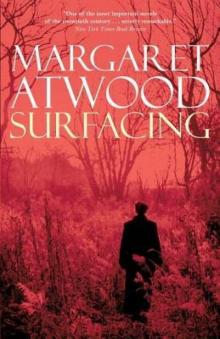 Surfacing
Surfacing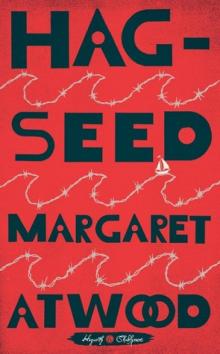 Hag-Seed
Hag-Seed Oryx and Crake
Oryx and Crake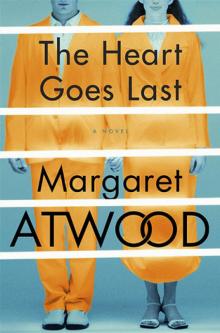 The Heart Goes Last
The Heart Goes Last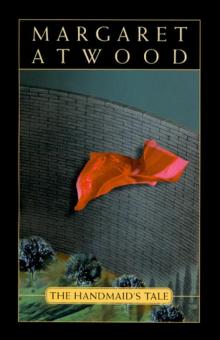 The Handmaid's Tale
The Handmaid's Tale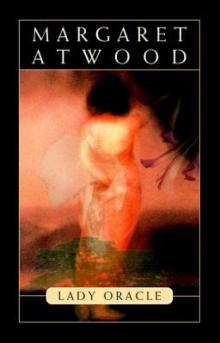 Lady Oracle
Lady Oracle Good Bones and Simple Murders
Good Bones and Simple Murders The Robber Bride
The Robber Bride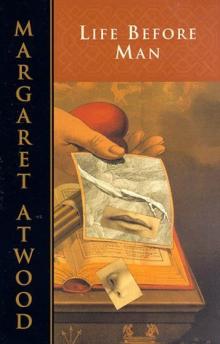 Life Before Man
Life Before Man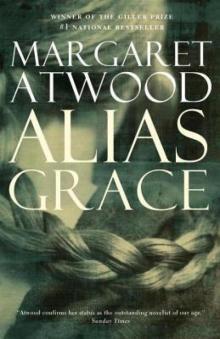 Alias Grace
Alias Grace The Blind Assassin
The Blind Assassin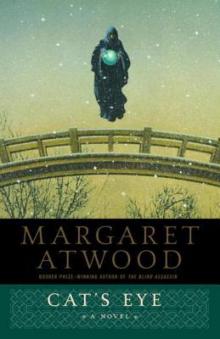 Cat's Eye
Cat's Eye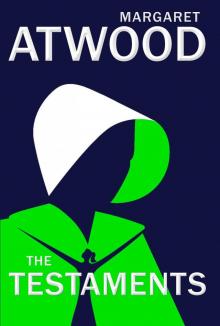 The Testaments
The Testaments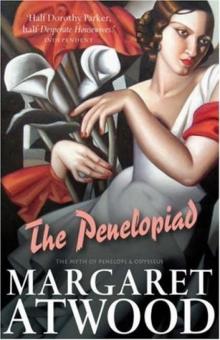 The Penelopiad
The Penelopiad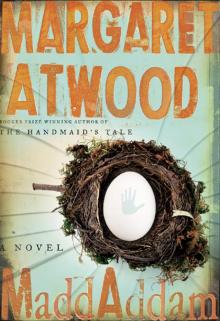 MaddAddam
MaddAddam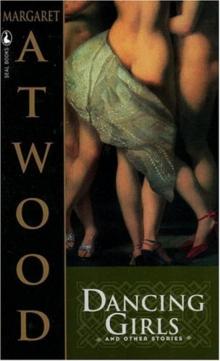 Dancing Girls & Other Stories
Dancing Girls & Other Stories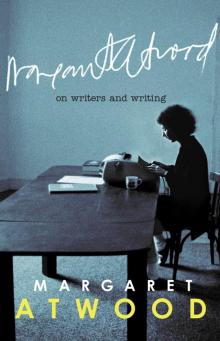 On Writers and Writing
On Writers and Writing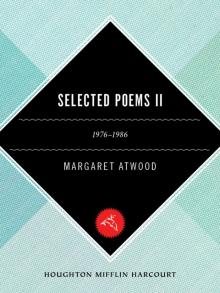 Selected Poems II (1976-1986)
Selected Poems II (1976-1986)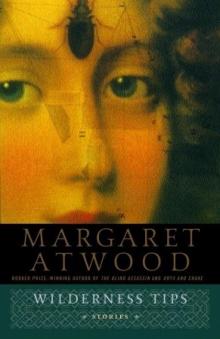 Wilderness Tips
Wilderness Tips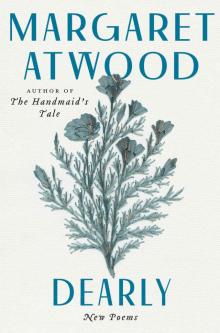 Dearly
Dearly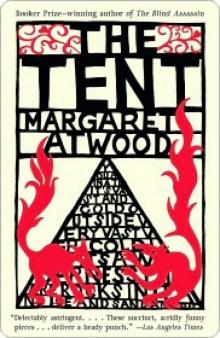 The Tent
The Tent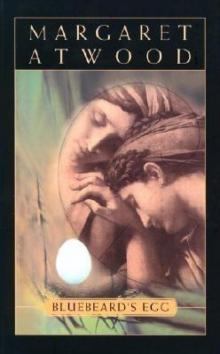 Bluebeard's Egg
Bluebeard's Egg The Edible Woman
The Edible Woman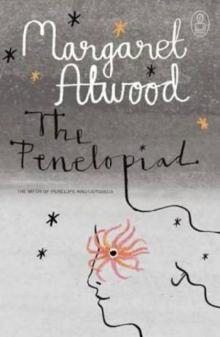 The Penelopiad: The Myth of Penelope and Odysseus
The Penelopiad: The Myth of Penelope and Odysseus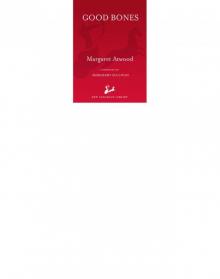 Good Bones
Good Bones I Dream of Zenia with the Bright Red Teeth
I Dream of Zenia with the Bright Red Teeth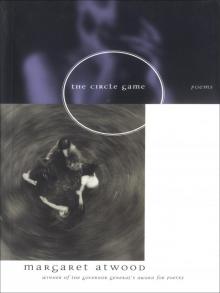 Circle Game
Circle Game Choke Collar: Positron, Episode Two
Choke Collar: Positron, Episode Two Stone Mattress: Nine Tales
Stone Mattress: Nine Tales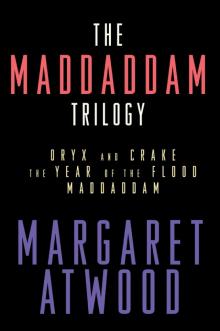 The MaddAddam Trilogy
The MaddAddam Trilogy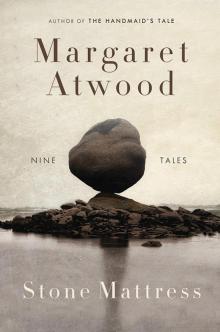 Stone Mattress
Stone Mattress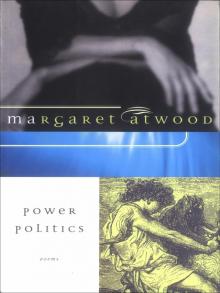 Power Politics
Power Politics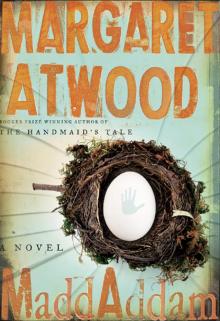 MaddAddam 03 - MaddAddam
MaddAddam 03 - MaddAddam I’m Starved for You (Kindle Single)
I’m Starved for You (Kindle Single)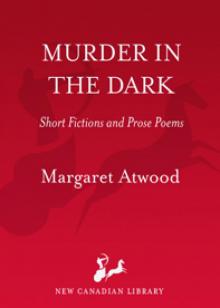 Murder in the Dark
Murder in the Dark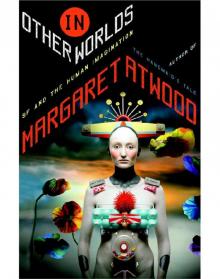 In Other Worlds
In Other Worlds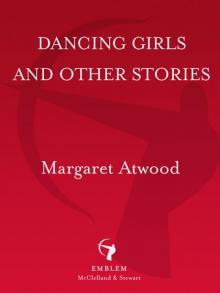 Dancing Girls
Dancing Girls Moral Disorder
Moral Disorder